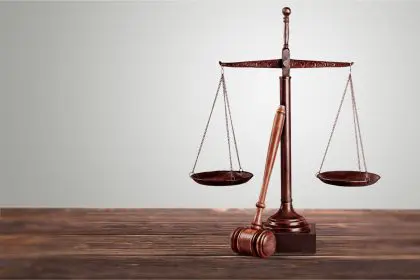In a world where safety and security are paramount, legal mechanisms like protective orders and restraining orders play crucial roles in shielding individuals from harm. However, the differences between these two types of orders are often misunderstood, leading to confusion and potential risks. Knowing the distinction between a protective order and a restraining order can empower individuals to make informed decisions about their safety and well-being. This article explores these differences, providing clarity and guidance for those who may need these legal protections.
What is a protective order?
A protective order is a legal directive issued by a court to safeguard individuals from threats, harassment or violence. Typically associated with cases of domestic violence, a protective order mandates that the abuser maintain a specific distance from the victim, refrain from contacting them and avoid any form of communication.
Types of protective orders
There are several types of protective orders, each serving different purposes based on the severity and nature of the threat:
- Emergency protective orders (EPO): Issued immediately when a person is in immediate danger, often by law enforcement.
- Temporary protective orders (TPO): Provide short-term protection until a full court hearing can be held.
- Permanent protective orders: Granted after a court hearing, offering long-term protection, sometimes lasting several years.
The primary goal of a protective order is to create a legal barrier between the victim and the aggressor, ensuring that the victim has the space and security needed to rebuild their life.
What is a restraining order?
On the other hand, a restraining order is a broader legal tool used in various situations, not limited to cases of domestic violence. Restraining orders can be issued in cases of stalking, harassment or disputes between neighbors, business partners or even acquaintances.
Types of restraining orders
Restraining orders can also vary depending on the nature of the threat:
- Civil restraining orders: Typically issued in non-criminal cases, such as disputes between neighbors or business partners.
- Criminal restraining orders: Issued as part of a criminal case, often to prevent the defendant from contacting the victim.
- Workplace restraining orders: Specifically designed to protect individuals from threats or harassment in a workplace setting.
Unlike protective orders, restraining orders are more versatile and can be adapted to fit various scenarios, providing a flexible legal solution for a wide range of conflicts.
Key differences between protective and restraining orders
While both protective and restraining orders aim to prevent harm and ensure safety, they differ significantly in terms of scope, purpose and the situations in which they are used.
Scope of protection
Protective orders are specifically designed to protect individuals from domestic violence or intimate partner abuse. They are often more stringent, with stricter enforcement and penalties for violations. In contrast, restraining orders can be used in a broader range of situations, including non-domestic conflicts, making them a more general tool for preventing harm.
Legal requirements and process
Obtaining a protective order typically requires proof of a close relationship between the parties, such as a familial or intimate connection. The legal process for obtaining a protective order can be more involved, often requiring a court hearing where both parties present evidence. Restraining orders, however, may not require the same level of personal connection, and in some cases, they can be obtained without a hearing, especially in civil matters.
Duration and enforcement
Protective orders often have longer durations, especially permanent protective orders, which can last several years. They are also strictly enforced, with severe penalties for violations. Restraining orders, while also enforceable by law, may have shorter durations and are typically tailored to the specific needs of the situation, with varying levels of enforcement.
Emotional and psychological impact
For those seeking protection, the emotional and psychological impact of obtaining either type of order can be profound. Protective orders are often sought in highly charged, emotionally fraught situations involving close relationships. The process of obtaining and enforcing a protective order can be emotionally draining but also empowering, providing a sense of safety and control. Restraining orders, while serious, may not carry the same emotional weight, especially in cases where the conflict is less personal.
Why understanding the difference matters
Misunderstanding the difference between a protective order and a restraining order can have serious consequences. For instance, seeking the wrong type of order may result in inadequate protection, leaving the victim vulnerable to further harm. Moreover, legal proceedings can be complex and intimidating, making it essential to have a clear understanding of which order best suits the situation.
Legal guidance and support
Navigating the legal system to obtain a protective or restraining order can be overwhelming. Legal professionals, including attorneys and victim advocates, can provide crucial support, helping individuals understand their options and guide them through the process. It’s important to remember that both protective and restraining orders are tools designed to safeguard your well-being, and seeking professional help can make the process more manageable.
Empowering yourself with knowledge
In situations where safety and security are at risk, knowledge is power. Understanding the difference between a protective order and a restraining order equips individuals with the information they need to take the appropriate legal action. Whether dealing with domestic violence, harassment or other threats, knowing which order to seek can make all the difference in securing protection and peace of mind. By taking the time to understand these legal tools, individuals can take proactive steps to protect themselves and their loved ones from harm.
This story was created using AI technology.













